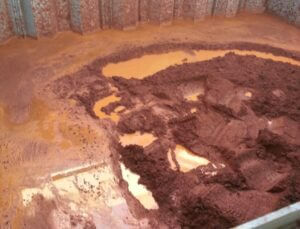Senior Associate, Jessica Ng, features in the latest edition of the Marine Insurer Journal. Jessica’s article: Cargo Liquefaction – Mitigating the Risk, explains the risk and impact of cargo liquefaction, and the legislation in place for storage, loading and transportation of cargo to mitigate these risks.
Cargo liquefaction takes place when a dry bulk cargo with high moisture content loses its strength and transforms from a solid dry state to an almost fluid state. As the cargo starts to behave like a liquid when the ship is moving, it can shift rapidly in the hold of a ship, making the ship unstable and causing it to capsize resulting not only in the potential loss of a vessel but also the loss of life.
Cargo can be exposed to agitation through loading from a height, during a voyage because the vessel encounters rough seas, or merely as a result of vessel vibrations resulting in compaction of the cargo, which in turn, can lead to liquefaction. Commonly known cargoes that pose this type of hazard are iron ore fines and mineral concentrates.
Jessica has extensive experience investigating marine incidents including cargo contamination on tankers, and liquefaction of nickel ore. Jessica has been heavily involved with agricultural bulk cargo claims pertaining to soybean and soybean and distillers dried grains with solubles (DDGS) in particular. She is experienced in providing advice on the carriage and care of the cargo, the sampling techniques, and the laboratory analysis used to determine the physical and chemical properties of the cargo.
Jessica’s full article Cargo Liquefaction – Mitigating the Risk can be read in the April edition of the Marine Insurer Journal on page 22.
If you would like to hear more about liquefaction, join our free webinar of Thursday 4th May when Nico Zurcher will be presenting on The Perennial Problem of Bulk Cargo Liquefaction.







